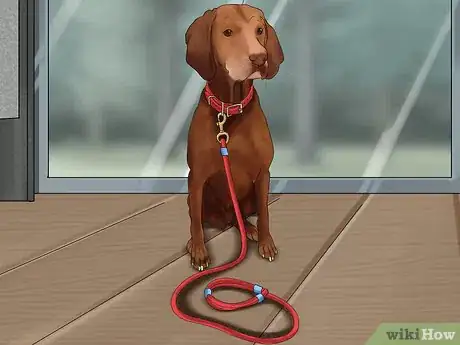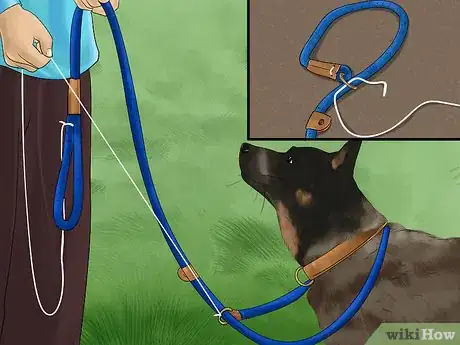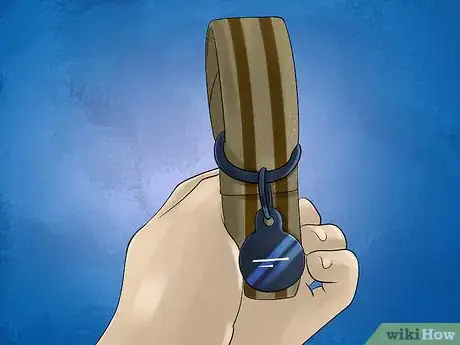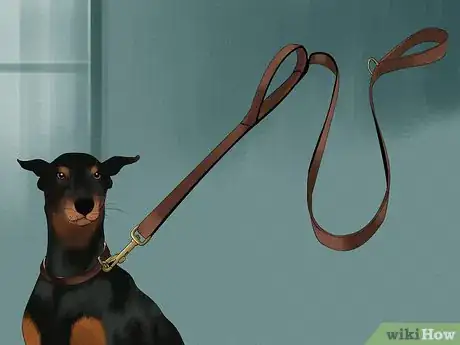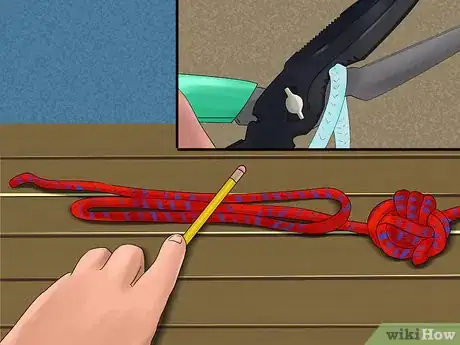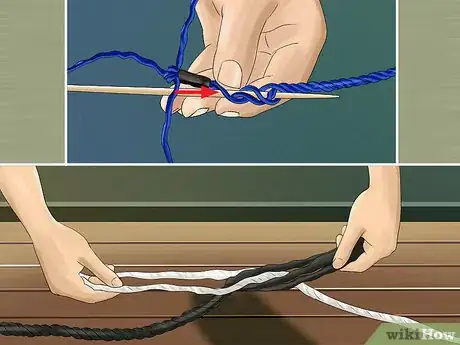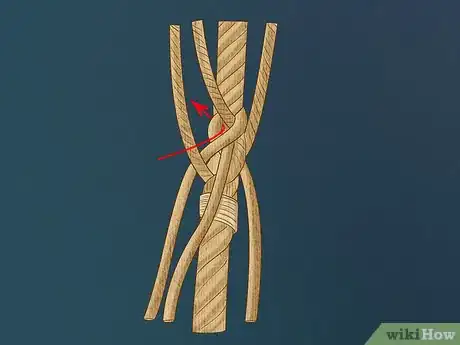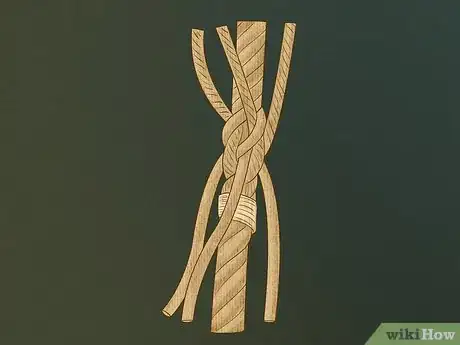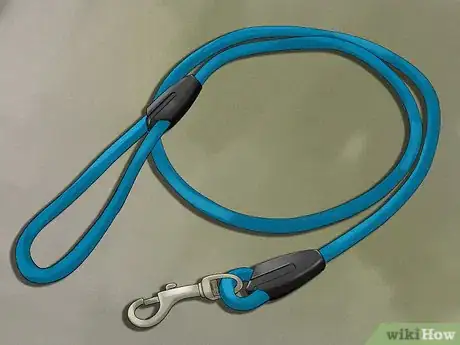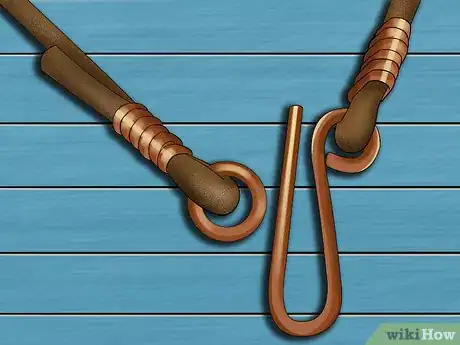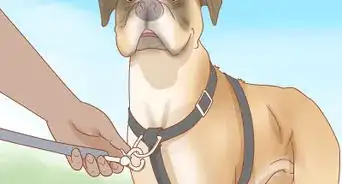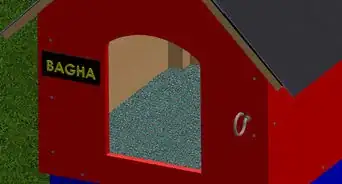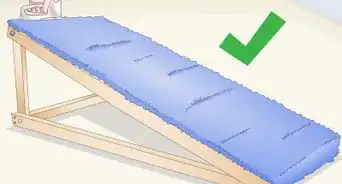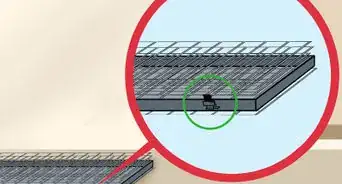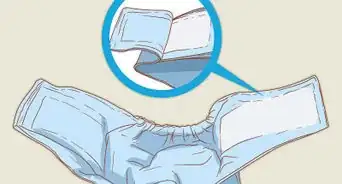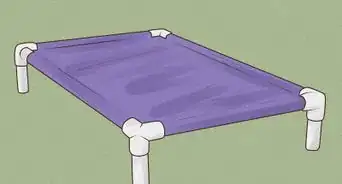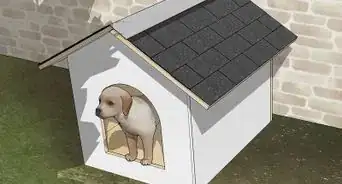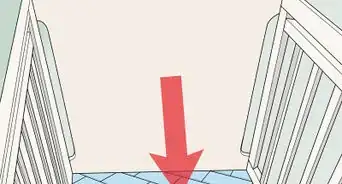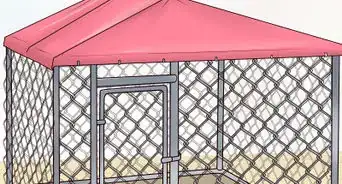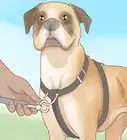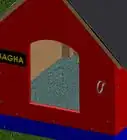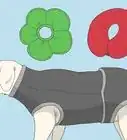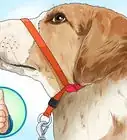This article was co-authored by Deanne Pawlisch, CVT, MA. Deanne Pawlisch is a Certified Veterinary Technician, who does corporate training for veterinary practices and has taught at the NAVTA-approved Veterinary Assistant Program at the Harper College in Illinois and in 2011 was elected to the board of the Veterinary Emergency and Critical Care Foundation. Deanne has been a Board Member of the Veterinary Emergency and Critical Care Foundation in San Antonio, Texas since 2011. She holds a BS in Anthropology from Loyola University and an MA in Anthropology from Northern Illinois University.
This article has been viewed 15,625 times.
Improvising a dog lead is an important skill that every dog owner should master. There are many ways to improvise dog leads. Just about any long, sturdy cord or cable that can be securely attached to your dog’s harness will do. For instance, you might use some spare rope, string, tights, or even an old belt.
Steps
Getting Creative
-
1Use a rope. Rope is one of the easiest things to improvise a dog lead out of. Just tie the rope or string through the clip of your dog’s harness. Make a simple knot by crossing the loose end of the rope over the long end, then pulling it through the loop. Your dog will never know the difference.[1]
- The best rope will not be too thick. Rope with a diameter of about 1 centimeter (0.4 in) (½ in) is ideal.
- Make a loop for the handle on an improvised lead of rope. Fold about 10 cm (4 in) of the lead over onto itself. Tie a loop in the rope or string, then cross the loose end over the main length once again, making a second loop. Pull it taut.
-
2Try a string. String, compared with rope, is thinner and therefore weaker. Select a thicker string if possible, especially if you have a strong dog who might break the improvised lead when they pull. If all you have is thin string, twine several equally-long pieces of it together.[2]
- For instance, you might take three or four strings about 2.4 m (8 ft) long, then twist them along their lengths into a kind of rope-like braid.
- With your string dog lead in hand, loop one end through the clip of your dog’s harness. Cross the loose end over the main length of the lead and pull it through the loop to secure it.
Advertisement -
3Repurpose an old belt. If you have a belt that is sufficiently long (about 2 to 2.5 meters or 6 to 8 ft), you could easily press it into service as a makeshift belt. Simply pull the end of the belt that has the clip or buckle on it through the dog’s harness, then fasten it.[3]
- The best belts for this improvised dog lead will have a buckle the releases with a small button at the top, or those that snap closed.
- The main disadvantage of using a belt is that you cannot make a looped handle. Wrap the end of the belt not attached to your dog’s harness around your hand if you need a better grip.
-
4Make a lead from a pair of old tights. An improvised dog lead made of nylon tights will probably not last long, but it will do in a pinch. Simply pull one leg of the tights through the clip on your dog’s harness, then tie the legs together at the ankles. The lead will essentially be just one big loop.[4]
Making a More Sophisticated Dog Lead
-
1Measure and cut your rope. Most dog leads are about 2.4 m (8 ft) long, so cut your rope to that length. Use nylon rope 1 centimeter (0.39 in) (½ in) thick.
-
2Unravel the rope’s strands. Separate about 12 cm (5 in) of the strands at one end of the rope, lengthwise. You should have three separate strands. Wrap a piece of masking tape tightly around the end of each strand to prevent further fraying.
-
3Create space in the rope with a fid. A fid is a kind of stake-like implement used when working with rope. Fold the unraveled end up about 12 to 15 cm (5 or 6 in) and jam a fid through the rope at this point. If you imagine the rope as a “J” at this point, with the frayed/cut end curved back up toward the rest of the rope, you should place the fid inside the rope at a point directly across from the lower tip of the “J”.
- Pushing the fid through the rope will open a gap between the rope and one of its strands.
-
4Splice the first unraveled strand into the rope. Lie the rope on its side so that it stretches from left to right before you. Slip one of the ends you cut through the loop created by the fid. Pull and twist it through to tighten.
-
5Splice the second strand into the rope. Remove the fid, then rotate the rope slightly. Shove the fid between the strand of rope located next to the first one you threaded and the strand directly below it. Slip another of the ends you cut through the loop created by the fid. Pull and twist it through to tighten.
-
6Splice the third strand into the rope. Remove the fid, then rotate the rope slightly. Shove the fid between the strand of rope located next to the second one you threaded and the strand directly below it. Pass the final strand through the opening you made with the fid.
-
7Continue splicing the strands into the rope. Repeat the splicing pattern three or four more times, gradually moving up the rope (and away from the end of the rope you cut). If you want a larger handle on your lead, weave the unraveled end into the main portion of the rope at a higher point along its length.
- If you want a smaller handle, weave the unraveled end into the main portion of the rope at a point that is further from the opposite end.
-
8Add a clasp to the rope. Lay the opposite end of the rope on a flat surface and curl about 8 cm (3 in) of it around toward the opposite end. Slip a small clasp of the sort used to attach leads to dog harnesses over the short end and position it at the low end of the curve in the rope. [5]
-
9Bind the clasp end. Position the rope in such a way that the shorter end curves up and away from you in a “J” shape. Set two rope clamps beneath the end of the rope to which you’ve attached the harness clasp. The clamps should encompass both the shorter end of the rope (the one curving backwards toward the end you spliced together) and the longer portion of the rope (the right side of the “J”).[6]
- Place one clamp closer to the clasp, and place the other closer to the loose tip on the short side of the “J”.
- Carefully hammer the clamps closed by smashing their prongs inward so that they cover the rope.
- Give the clasp a tug once you’re done. The rope should not loosen or move if the clamps have been closed properly.
- If the rope is not entirely secure within the clamps, hammer them with more force to ensure your dog lead won’t come apart.
Things You'll Need
- Rope
- String
- Belt
- Nylon tights
- Measuring tape
- Washing line
- Fid
- Clasp
References
- ↑ https://pet.tips.net/T003931_No_Leash_to_Walk_Your_Dog.html
- ↑ https://pet.tips.net/T003931_No_Leash_to_Walk_Your_Dog.html
- ↑ https://pet.tips.net/T003931_No_Leash_to_Walk_Your_Dog.html
- ↑ https://pet.tips.net/T003931_No_Leash_to_Walk_Your_Dog.html
- ↑ http://www.curbly.com/15120-how-to-make-a-modern-dip-dyed-rope-dog-leash
- ↑ http://www.curbly.com/15120-how-to-make-a-modern-dip-dyed-rope-dog-leash
About This Article
To improvise a dog lead, get a piece of rope or string and tie it through the clip of your dog’s harness. It’s best if you have rope that’s about 1 centimeter in diameter, or if you braid together three or four strings so that your improvised dog lead is sturdy. Alternatively, you can use a long belt by pulling the end of the belt with the clip or buckle through your dog’s harness. If you’re really in a pinch, you can even get a pair of old tights and attach one leg to the clip on your dog’s harness. For more tips from our Veterinary co-author, including how to make your own sophisticated dog lead from rope, scroll down!
